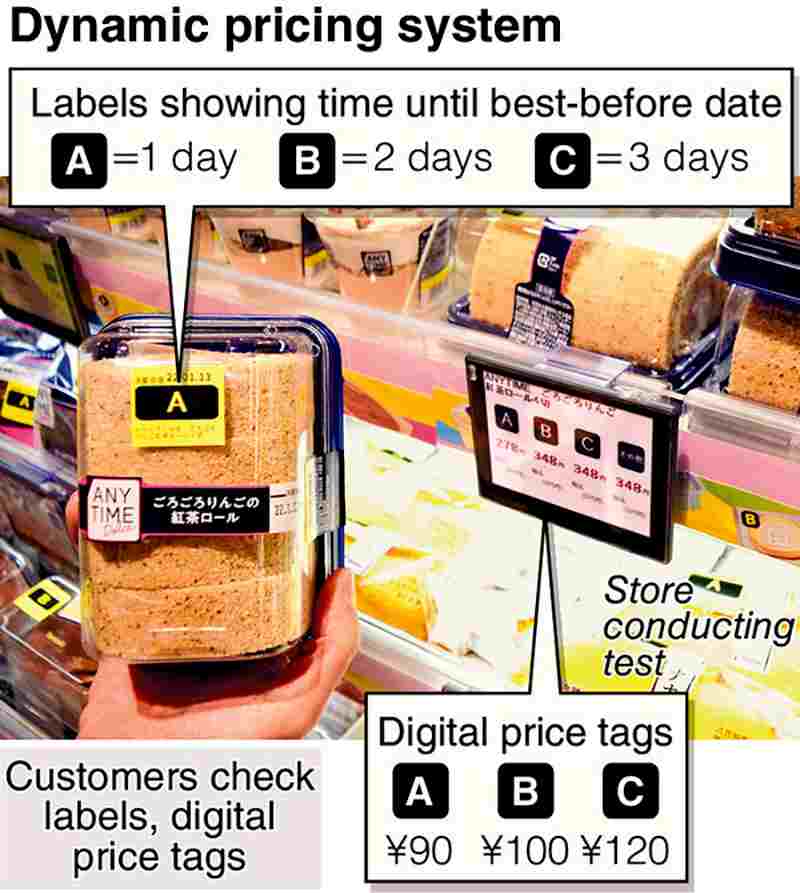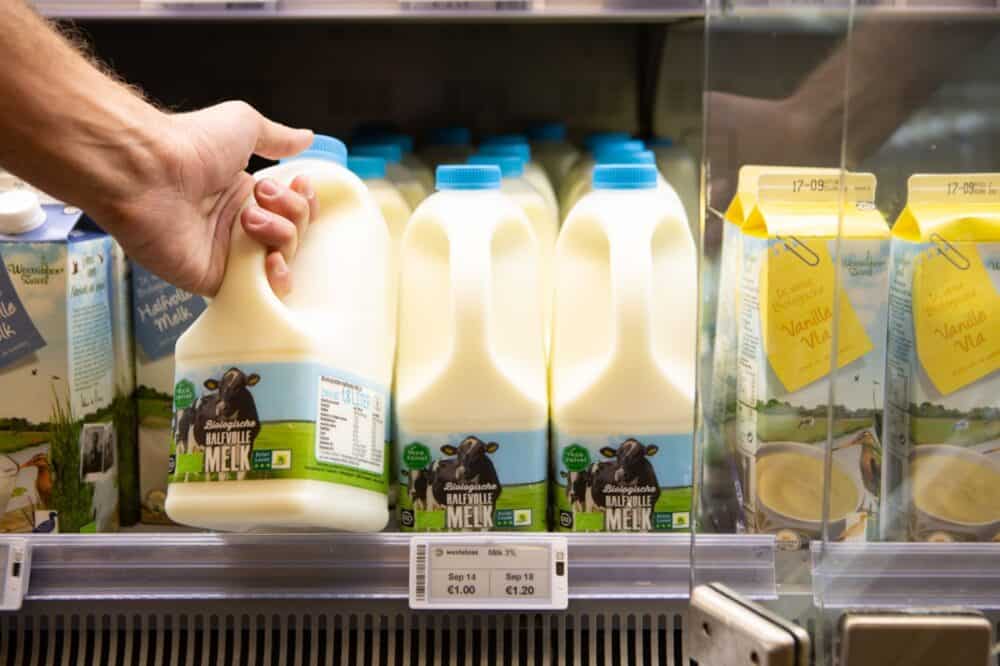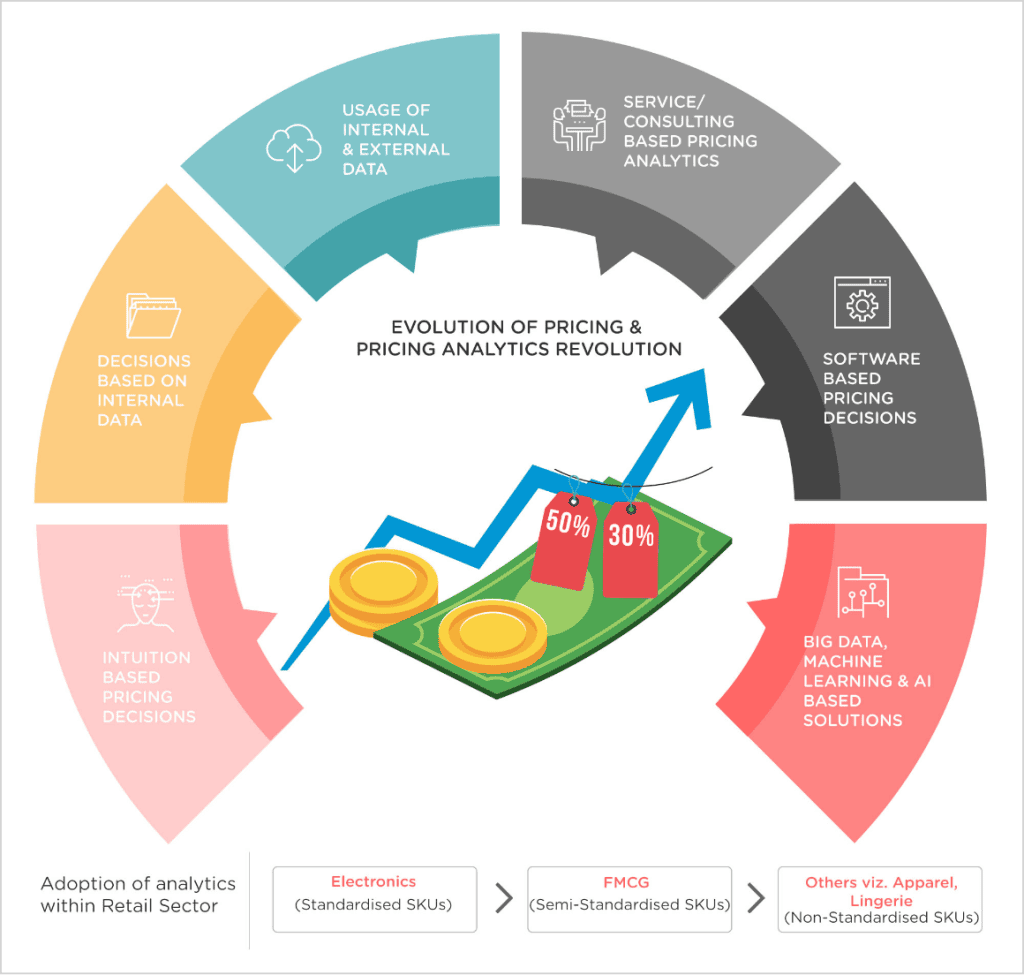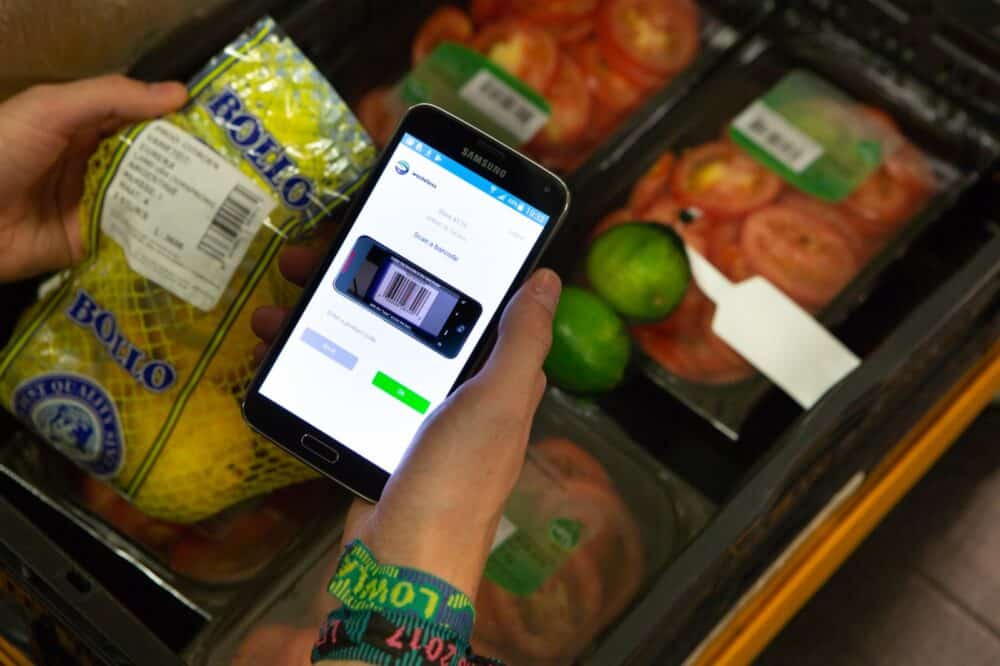In the constant competition between stores in the grocery industry, proper pricing can make a huge difference in attracting customers and increasing profits. To achieve this goal, dynamic pricing is one of the effective strategies that can be effective in improving the profitability of stores.
In this article, written by the Vira team, we’ll explore a guide to dynamic grocery pricing and share practical strategies to increase profits, reduce returns, and prevent food waste. By applying these solutions, you can see a significant improvement in the financial performance of your store.

The importance of dynamic pricing in food products
Dynamic pricing is a key strategy in the food products industry that can have a significant impact on increasing your profits. Due to the intense competition in the food market and the constant changes in supply and demand, dynamic pricing can help you outperform your competitors and conquer the market.
Dynamic pricing means updating and adjusting product prices based on market conditions and various factors including competition, demand and supply, production costs, and marketing strategy. By implementing dynamic pricing, you will be able to adjust the prices to be more profitable at each time step and also conquer the market using attractive and competitive prices.
Its influence on food products is very wide. On the one hand, by adjusting the prices in such a way that they are suitable, you can increase the demand of the customers and thus the sales. On the other hand, by using the right prices, you can experience more revenue and improve your profit.
Increase profit and decrease rate of return through dynamic pricing
One of the importance of dynamic pricing in the sale of food products is to increase profit and reduce the return rate. By adjusting the price of your products based on the market conditions, you can attract a part of the demand and thus increase your sales. Also, according to demand and supply, you can adjust prices and get raw materials at the right price to reduce production costs and increase your overall profit.
Principles of dynamic pricing in food products
In the food industry, it is the main tool for increasing profit and competitiveness. Due to the characteristics of this industry, which include price changes and high consumption trends, the principles of dynamic pricing are very vital for business management.
1. Market analysis and competition
First of all, in food products, it is necessary to analyze the market and the competition in detail and understand clearly what the needs are in the market and how the competitors make their income. By analyzing this information, it is possible to achieve a more appropriate dynamic pricing method.
2. Consumer culture
Another important principle in dynamic pricing in food products is knowing the culture of consumers. Examining the habits and tastes of consumers allows determining the right price for products. In addition, knowing the willingness to pay more for high-quality products has a significant impact on pricing.
3. Competitive strategies
In the dynamic pricing of food products, competitive strategies are very effective. For example, setting lower prices than competitors to attract new customers, setting higher prices for products with special merits, and using temporary discounts to attract the loyalty of existing customers.
4. Following economic principles
The principles of dynamic pricing in food products must be established on strong economic foundations. In determining the price, one should pay attention to the production cost, marketing cost and also the desired profit from the sale. Failure to comply with economic principles in pricing can lead to loss of profit and instability for business.
By following the principles of dynamic pricing in food products, you can improve your financial performance and have more success in the market. By analyzing the market, understanding consumer culture, using competitive strategies, and following economic fundamentals, dynamic pricing can be a powerful tool to improve your business.

Dynamic pricing methods in food products
Dynamic pricing as an important strategy in marketing food products, increases profits and business growth. In this section, we will review dynamic pricing methods in food products and explain how to implement each of these methods.
1. Variable discount method: In this method, the price of food products changes periodically. For example, you can specify different discounts for the days of the week, lowering the price on low-demand days to attract more customers and increasing the price on high-demand days to make more profit.
2. Seasonal discount method: In this method, you adjust the price of the products according to the seasons of the year. For example, in the summer season, you can apply special discounts on cooling products and juices to create more appeal for customers in this season.
3. Time discount method: In this method, you consider a specific time range for applying discounts. For example, you can apply special discounts for certain holidays or holidays to encourage customers to shop during these times and increase your sales.
These dynamic pricing methods in food products can help you beat your competitors and guarantee yourself the largest market share. According to the needs and demands of customers, choose the right method and dynamically price your food products to improve profits.
*Dynamic discount according to the conditions of transportation and maintenance
Another one of the most important types of these discounts in stores is providing dynamic discounts according to the expiration date of food products, their storage, and transportation conditions. By doing this, you give the power to the consumer to buy according to their consumption needs and at a more suitable price. For example, you can sell food products that are close to their expiration date at a greater discount so that if a consumer wants to consume that food item on the same day or earlier, she can buy the product at a lower cost than this kind of Return and waste of food be prevented
Of course, because the expiration date is static and does not have suitable data on the conditions of production, transportation, and storage of food products, it cannot be a suitable option for dynamic discounting in this field. But with the use of smart packaging technology and active packaging, this problem can be well covered and the product’s salient status can be dynamically checked and dynamic discounts can be applied to food products.

The impact of dynamic pricing on competitors
Dynamic pricing is a very important strategy in selling food products that has a significant impact on competition with competitors. By using dynamic pricing, you can benefit from competition with competitors in the food market and better meet the needs of your customers. This strategy makes customers attracted to your products and choose you instead of your competitors.
One of the effects of this type of pricing on competitors is increasing demand and customer satisfaction. By adjusting the price of your products dynamically, you will be able to better meet the needs and desires of customers and achieve an increase in sales. This will ensure that your customers get the most out of your products and that your competitors experience a reduction in sales due to the impact of dynamic pricing.
Also, the impact of dynamic pricing on competitors makes you more competitive in the food market and differentiates you from your competitors. By using dynamic pricing, you will be able to express your uniqueness in front of your competitors and attract customers to your side. This effect will make you win in the food market and gain more share.

Therefore, to compete with competitors and improve your position in the food market, it is very important to use this method in selling your food products. Due to the positive effects of this strategy, you will be able to improve your profits and compete with your competitors.
Providing special discounts in dynamic pricing
Dynamic pricing is a vital strategy for selling food products that allows you to boost competition in the market by offering special discounts to your customers while increasing your profits. This strategy will not only help you increase the satisfaction of your customers, but it can also be effective for attracting new customers.
Special discounts can be applied to food products in several ways. One of the common methods of providing special discounts is the discount based on the customer’s purchase amount. For example, you can apply a discount for purchases above a certain price ceiling. This discount will be attractive to customers who buy more and at the same time, it will enable you to increase your sales.
Another way to offer special discounts is to offer discounts for specific products or categories. By allocating discounts to your top products or popular categories, you encourage customers to purchase these products and increase sales at the same time. This method can help you balance pricing and avoid undervaluing other products.

By implementing a dynamic pricing strategy and offering special discounts, you can give your competitors a unique look and drive customers to buy from you. In addition, by attracting new customers and providing them with a good experience, the probability of them returning in the future will also increase.
| Advantages | Results |
|---|---|
| Increase in demand | Increase sales and income |
| Attracting new customers | Attracting new customers |
| Increase customer loyalty | Reducing the rate of return and stability in the market |
In short, offering special discounts on dynamic pricing can help you increase customer satisfaction, beat competitors in the market, and increase your profits at the same time. By using various and attractive special discounts, you can attract your customers and provide them with a good shopping experience in your store.
Using seasonality in dynamic pricing of food products
Using seasonality in dynamic pricing for food products is an effective and efficient strategy that allows you to adjust and optimize the price of your products according to the changes and conditions of different seasons. This strategy has the ability to create the right balance between demand and supply and allows you to be more productive in each season.
Using seasonality in this pricing model allows you to adjust the price of your products by analyzing the behavior of demand and the wishes of customers in each season. It helps you optimize your profit by using dynamic pricing on food products.
The strategy of using virtue in dynamic pricing
Using seasonality in dynamic pricing means that you change the price of your products according to the features and characteristics of each season. For example, in spring, there may be more demand for products related to outdoor activities, such as picnics. In this case, you can set the price of these products a little higher and get more profit.
By using seasonality in dynamic pricing, you can increase your profit by adjusting prices and setting strategic prices in each season. In each season, you can have strong competition and attract customers by offering appropriate discounts and adjusting prices based on demand and market trends.
Conclusion and Recommendations
According to the material discussed in the previous sections, it can be concluded that dynamic pricing in food products is very important and can have a positive effect on profit and sales. For the successful implementation of this strategy, we recommend:
- Market research: First, you need to carefully study the market and accurately determine the needs and desires of customers.
- Price competitiveness: Check the prices of competitors and set a percentage lower than them so that customers are more interested in buying from you.
- Discounts and special offers: providing discounts and special offers to customers in certain time frames can attract new customers and retain old customers.
- Use of seasonality: Consider the seasonality of food products, consider pricing according to each season, and do special marketing to attract customers in each season.
- Product variety: Adding more variety to your food products will help you improve competition in the market and encourage more customers to buy from you.

By following the above and properly implementing dynamic pricing in food products, you can improve your profit, reduce your returns, prevent food waste, and be more successful in the competitive market.
Summary
In this article, we examined the concept of dynamic pricing in food products. Dynamic pricing means setting variable and adaptive prices based on different market conditions. We discussed the importance of this approach in increasing profits for stores and its impact on competition.
Also, in different sections, we examined the principles and methods of dynamic pricing in food products. We mentioned the use of special discounts, seasonality in pricing, and other strategies that can be effective in improving profits and attracting customers with the help of a dynamic pricing guide.
By using a dynamic pricing guide in food products, stores can better adapt to the needs and changes of the market and improve their profits. Therefore, we recommend that you take effective steps to dynamically price food products based on the principles and methods presented in this guide and move forward in successfully managing your store.
Q&A
What is dynamic pricing?
It is a method in which the price of products changes based on changing market conditions. Using this method, you can automatically adjust the price and achieve more efficiency in the sale of food products in stores.
Why should we do dynamic pricing in food products?
Dynamic pricing in food products helps increase profits. Due to the changing conditions of the market, by optimally setting the price of the products, it is possible to defeat the competitors and take a larger share of the market. Also, considering the increase in sales and respect for customers during pricing and giving them the power of choice in purchasing, food returns, and wastage are prevented.
What principles should be observed in dynamic pricing?
In the dynamic pricing of food products, principles such as calculating costs, estimating demand, determining price sensitivity, and setting prices based on market conditions must be observed.
What methods are there for dynamic pricing in food products?
In dynamic pricing in food products, methods such as pricing based on competition, pricing based on performance continuity, pricing based on efficiency, and pricing based on product characteristics can be used.
What effect does dynamic pricing have on competitors?
Dynamic pricing has a huge impact on competitors. By using this strategy, it is possible to damage the competitors and gain a larger share of the food market.
How to offer special discounts in dynamic pricing?
To provide special discounts in dynamic pricing on food products, methods such as seasonal discounts, group discounts, and time discounts can be used. These discounts can attract competitors and expand the sales market.
How can seasonality be used in the dynamic pricing of food products?
To use seasonality in dynamic pricing for food products, the price can be changed to match the seasons. By allocating the right price in each season, customers’ demand can be increased and profit can be improved.
What suggestions do you have for dynamic pricing in food products?
To dynamically price food products, we suggest that you use the principles of cost and demand calculation, special discounts, determining the price based on efficiency, and using seasonality in pricing.

